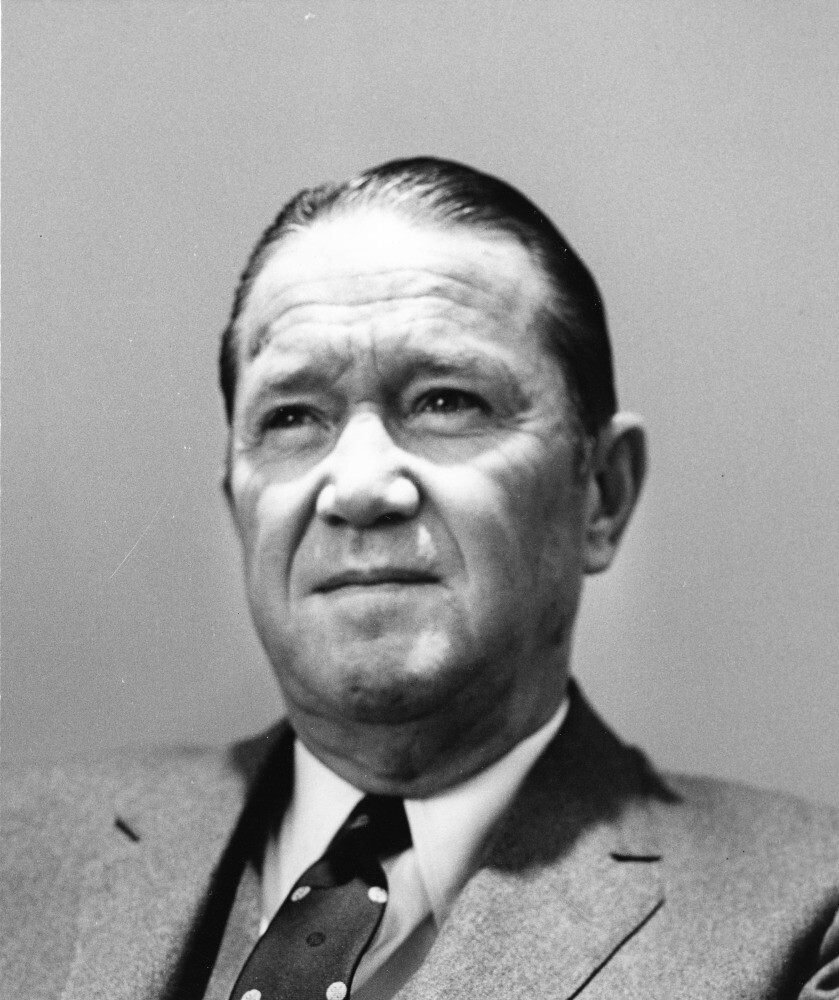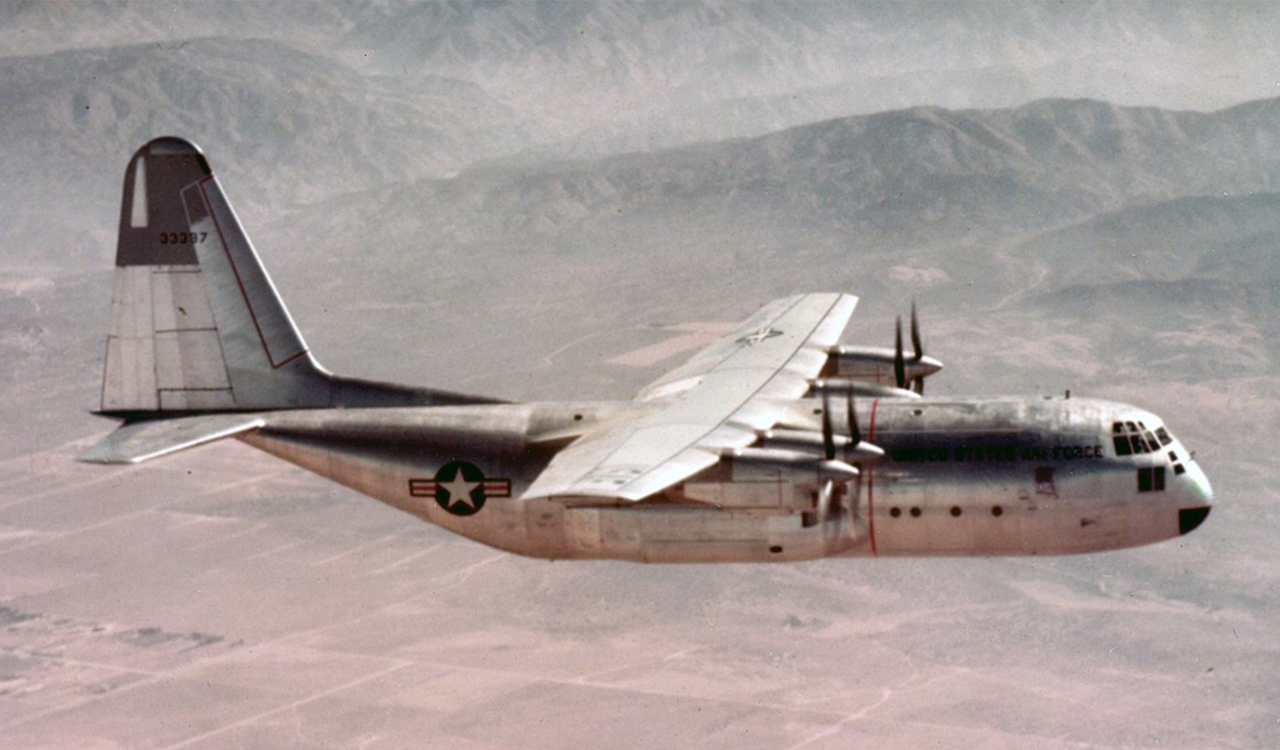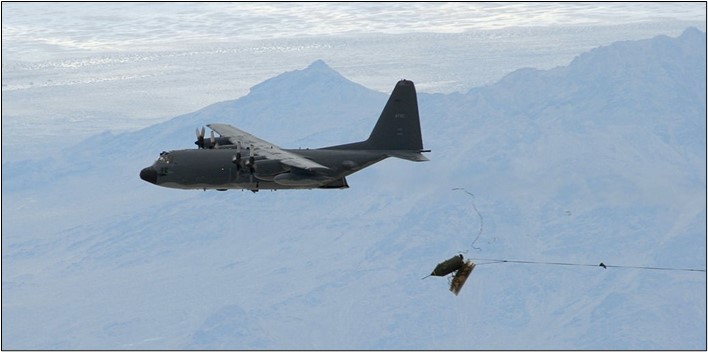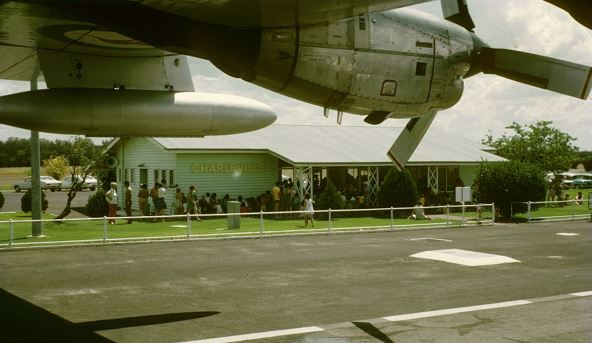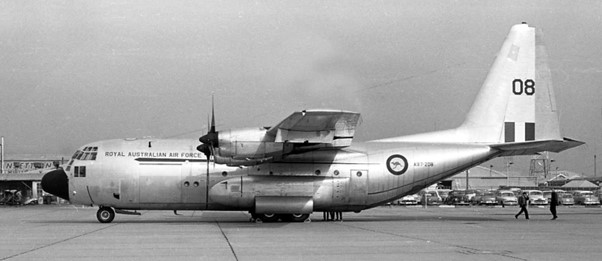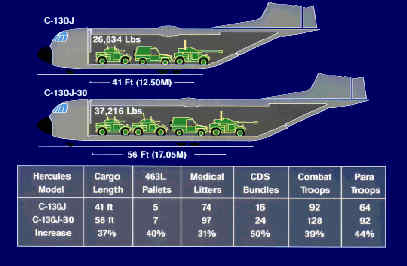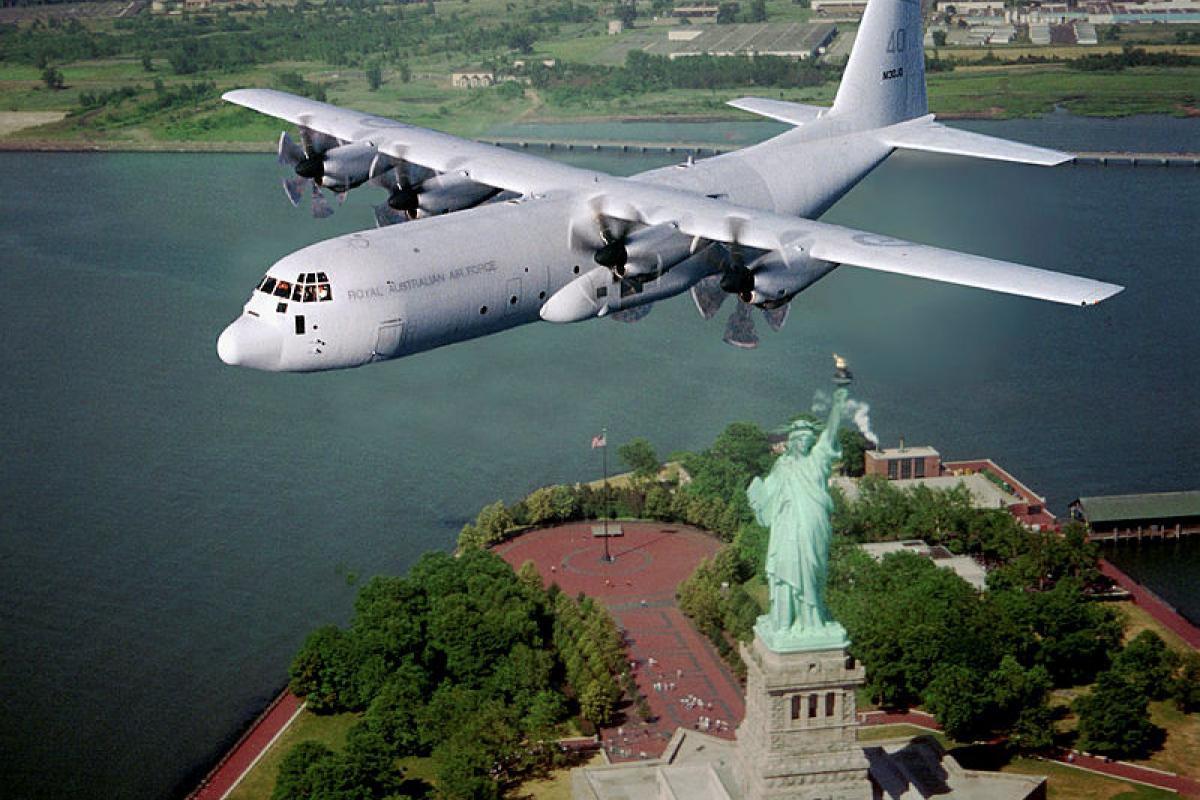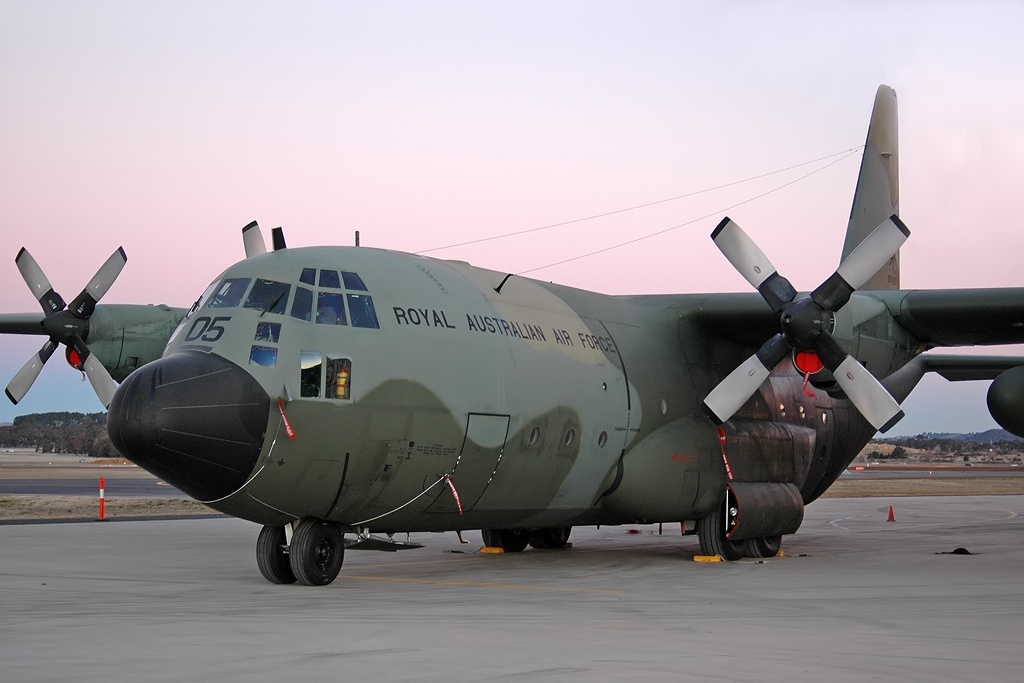|
|
||
|
||
|
Privacy Policy | Editorial Policy | Profit Policy | Join the Association | List of Members | Contact us | Index | Links |
||
|
Back Go to page: 1 2 3 4 5 6 7 8 9 10 11 12 13 14 15 16 17 18 19 20 Forward |
||
|
|
||
|
My Story |
||
|
Contents:
|
||
|
The Mighty Herc.
Who wanted to build a stubby turboprop cargo aircraft at the dawn of the jet age?
It was 1951, and the U.S. Air Force was seeking designs for an aircraft capable of hauling large bulky equipment, including artillery pieces and tanks, over long distances. It had to land in tight spaces, slow to 125 knots for para-troop drops, and fly, if need be, with one engine. What the Air Force wanted, in other words, was a tough, versatile heavy lifter with plenty of “boot” space. One to replace the C-119 Flying Boxcar, C-47 Skytrain, and C-46 Commando, which were inadequate for modern warfare
Hall Hibbard, Lockheed’s chief engineer, eyed the request and saw potential. Design genius Kelly Johnson, by contrast, viewed it as a potential disaster, a diversion from the high-speed, high-performance jet fighters that were his focus. “If you send that in,” Johnson told his boss, Hibbard, referring to an early proposal for the aircraft, “you’ll destroy the Lockheed Company.”
It’s a good thing Hibbard didn’t listen. When the prototype YC-130 taxied for its inaugural flight on the 23rd August 1954, it was clear to all, even Johnson, that the Lockheed engineers had forged something timeless out of a seemingly simple list of Air Force requirements. Later officially nicknamed Hercules, the prototype had a cargo deck that was capable of carrying an astonishing 135kg per square foot, lifted into the air after a ground roll of a mere 260 metres, an astoundingly short distance considering most aircraft of that size required 1,500 metres. Soon after that first flight, 2,000 C-130 Hercules’ were put into production.
Building the Herc.
The creation of the C-130 Hercules came about largely as a result of America’s experience in the Korean War. U.S. forces fighting along the 38th parallel dividing North and South Korea, quickly discovered that their aerial transports were ill-equipped for the missions at hand. Some were too heavy. Some needed longer runways for take-offs and landings. Others had weight restrictions, which prevented them from transporting bulky supplies or large numbers of soldiers.
What the U.S. military needed was a single versatile aircraft that could be used for any and all transportation needs, one aircraft that would perform the role of many. Which is precisely what Lockheed’s Hercules accomplished. With a sweeping array of 23 cockpit windows allowing for clear visibility on steep approaches and high wings to operate from rough fields, the original C-130 Hercules was the antithesis of the sleek, speedy jets of its day. It had a low centre of gravity, reached 310 kts and boasted a large, easily accessible cargo area that could carry 18,000 Kg.
But it was a key design element, instituted by a team of engineers that may have proven most useful for its longevity. The inclusion of four turboprop engines provided surplus power to pressurize the fuselage of the plane, including the cargo compartment, which was necessary to fly efficiently at higher altitudes. The strengthening of the airframe to accommodate pressurization added an extra layer of durability that eventually protected the plane for its unprecedented six decades, and counting, of military and humanitarian service.
|
||
|
|
||
|
Throughout the more than 70 variants and more than 2,400 aircraft, the Hercules has more than proven its worth. There is quite literally a Hercules airborne somewhere in the world every minute of every day.
A new era in Australian airlift began on the 13th December 1958 when Wing Commander Ian Olorenshaw, a former fighter pilot and his crew touched down at RAAF Richmond, completing the delivery flight of the first C-130A Hercules for the Royal Australian Air Force. Just two years after the US Air Force accepted its first Hercules, Australia became the first international C-130 operator.
War Bird
The C-130 was pressed into action in Vietnam, where it picked up and dropped off troops and supplies in the most remote of locations. Wherever there was a dirt road surrounded by jungle or an asphalt runway riddled with potholes, the C-130 Hercules was there, either to supply needed reinforcements or rescue injured soldiers in need of medical assistance. C-130s were also perfectly equipped to carry out low-altitude parachute extraction drops of cargo, which led to the plane’s key role in the defence of Khe Sanh in 1968, when C-130s accounted for 90 percent of the supplies used by troops defending the village from a North Vietnamese siege.
As the war progressed, C-130s were modified into MC-130 Combat Talons, which not only picked up special operations forces in hostile territories but acted as flying fuel tankers, orbiting in the sky as American rescue helicopters docked with them to refuel. Equipped with ground-target radar, 20mm Gatling guns, 40mm cannons, and later, a side-firing 105mm Howitzer, C-130s morphed into AC-130 gunships, destroying 10,000 enemy trucks and repelling countless enemy attacks.
|
||
|
|
||
|
Late in the war, Hercules planes were even being fitted with the largest bomb in the U.S. arsenal, the 15,000-pound BLU-82.
Three decades later, Marine Corps KC-130J tankers were being fitted with missiles so crews could take out hostile targets on the ground in Afghanistan while waiting to refuel fighters and helicopters.
Life Savers
There has been one constant over nearly three generations of devastating humanitarian crises: The C-130 has been there to help. The people of the Congo, Somalia, Bosnia, Rwanda, Kosovo, Japan, and points all over the world, including New Orleans after Hurricane Katrina, have all benefitted from the C-130’s unparalleled delivery and airdrop capabilities, whether they were acting as a flying hospital or delivering hay to cows marooned by a snowstorm or a flood. In January 2010, C-130s helped haul more than 13,600 short tons of cargo, transport more than 25,800 passengers, and route 280 patients for medical evaluations from Haiti, after the country’s devastating earthquake.
After cyclone Tracy, an A Model Herc from 36 Squadron carried 7,000 blankets, 6,000 lbs of milk and 2,000 lbs of Red Cross medical supplies to Darwin. It returned with 35 evacuees for Brisbane and 82 for Sydney. Another Herc carried 24,000 lbs of freight to Darwin and brought back 115 evacuees to Mascot and another carried clothing, food, blankets, rolls of plastic and water purifiers with a total weight of 24,000 lbs, returning with 121 evacuees. On one C-130E flight (37Sqn) 183 evacuees (107 children and 76 adults) were flown from Darwin to Adelaide.
One C-130A from 36Sqn landed at Charleville with a U/S engine – evacuees had an unscheduled overnight stop in Charleville while the RAAF went AOG.
|
||
|
|
||
|
When aircraft were forced to remain at Darwin for prolonged periods awaiting passengers, the crews rested on board. Foam rubber mattresses, pillows, rugs and stretchers were carried for this purpose. On the 26th December, the RAAF’s Hercules evacuated 680 persons and on the next day 1218 in 22 sorties.
36 Sqn C-130A’s carried evacuees to all major capital cities. It transported 3,074 passengers and 1.4 million lbs of cargo. By the end of January 1975, 37 Sqn’s aircraft had carried 2,160,627 lbs of stores and equipment, 4,990 passengers and 210 medical evacuees.
|
||
|
|
||
|
One crew had to perform a three-engine takeoff because the base commander said no spare parts were available to fix the engine. In total, the RAAF Hercules flew a total of 1197.8 hours serving Darwin after Tracy which included 247 medical evacuations.
During fire season in the United States, eight specially equipped C-130s are put through their paces by crews with little margin for error. Flying over rugged mountainous terrain, often through deadly plumes of black smoke, the C-130s must slow down to 120 knots, zoom in over targeted hot spots and drop fire retardant before quickly pulling up to avoid the oncoming ridges. It’s essential to firefighting efforts, as the mixture of water and fertilizer coats the foliage to slow the rate of burn, thus buying precious time for the firefighters on the ground to contain its spread.
|
||
|
|
||
|
The C-130 is equally adept on snow and ice. Equipped with skis and Teflon-coated runners, the durable aircraft has earned great respect for safely delivering supplies deep into Antarctica or to the Greenland ice cap.
In the 1990s, the improved C-130J Super Hercules was developed by Lockheed (later Lockheed Martin). This model is the newest version and the only model in production. Externally similar to the classic Hercules in general appearance, the J model has new turboprop engines, six-bladed propellers, digital avionics, and other new systems. There are two versions of the C-130J aircraft, the C-130J and the C-130J-30. The RAAF operates the C-130J-30 model.
The RAAF and 9/11.
Throughout its history, Air Force’s No. 37 Sqn has often been first on the scene during times of crisis. Few might be aware that, following the Al Qaeda attacks on the 11th September, 2001, (9/11) a. 37 Sqn C-130J Hercules and its crew were amongst the first to land in New York City. The Pilot, SqnLdr Kevin Bruce (right), currently a reservist instructor with No. 37 Sqn, recounted the events that led to a mission from Atlanta to New York City following the attacks.
“We were in the United States in September 2001 completing the testing of the Block 5.3 upgrade to the C-130J. The aircraft used for the trials, A97-442, was operated from Dobbins Air Base in Atlanta, Georgia, adjacent to the Lockheed Martin C-130 Hercules manufacturing plant. The crew included pilot FltLt Paul Long, and FltLts Jayson Livingstone and Michael Crooks as the co-pilots. They were supported by loadmasters Warrant Officers Mick Smith and Graeme Clark. 9/11 happened towards the end of our final phase. The following day, we went to Lockheed Martin, but no aircraft were allowed to fly, all airborne aircraft during 9/11 were landed at the nearest airfield once air traffic control worked out what was happening.
Dobbins Air Base, located just 50 kilometres from Atlanta, was filled with commercial airliners in the days following 9/11. Atlanta also happened to be the home of the United States’ Centres for Disease Control and Prevention (CDC). GpCapt Steve Bucholtz, (right) the RAAF Assistant Air Attachè in Washington DC, received a request to ferry CDC personnel and equipment to New York. To some extent, this was because the United States Air Force command chain was focused on recovery from the attack on the Pentagon, as well as responding in other areas. The CDC team would investigate the ground zero site and determine whether any biological agents had been used in the attacks.
The mission on September 14 was a joint task between Lockheed Martin and the RAAF, taking a Lockheed Martin Test Pilot. The CDC team and the intermediaries were truly grateful for the assistance the RAAF was providing during an unprecedented moment in their nation’s history.
|
||
|
|
||
|
The Hercules carried 31 passengers for the two-and-a-half hour flight to New York, with the only other air traffic being fighter aircraft on combat air patrol missions, and refuelling tankers. The flight up was eerie, airspace that for decades before and the decades since were and are a continual buzz of activity was literally silent, we were handed from one air traffic controller to another with little more than a welcome, then silence. This was on airwaves that are typically a continual stream of control instructions and replies. We were often thanked with sincerity and transferred to the next controller where the scene was repeated. I doubt and hope that this experience will ever be repeated again.
Both the weather and air traffic around New York on the 14th September contrasted heavily with that of the 11th September. The arrival into La Guardia Airport was truly surreal; The airfield had been closed since the 11th and the weather was poor with low cloud and showers about,” if this had been the weather 72 hours earlier, [I wonder] how would the events of the 11th September, and the geostrategic events that followed, would have played out? We approached the airfield from the south roughly paralleling Manhattan Island, through breaks in the cloud I can still recall seeing the gap in the skyline where the towers had stood three days before.
The C-130J was the first aircraft to land at La Guardia Airport since all airline traffic had been grounded. With the CDC team unloaded, the Hercules departed back to Atlanta a few hours later; a week later the Block Upgrade test programme was resumed. The more time that passes, the more I realise that this was a moment in time that was unique in every aspect,” Squadron Leader Crooks said. “It is a significant, but little known part of the RAAF’s C-130J’s story.”
|
||
|
|
||
|
In 1978, 36 Squadron replaced its A-models with a dozen C-130Hs, which arrived in a camouflage paint scheme to emphasize its tactical airlift focus. In 1999, 37 Squadron retired its E-models and started flying the first of a dozen light grey, C-130J-30s. In 2006, 36 Squadron gave its Hercs to 37 Sqn and moved north to RAAF Amberley, to operate the RAAF’s new C-17s.
AirCdre Ian Scott, commander of Air Lift Group, says we love the Hercules and we’re going to keep them. There is something about the Hercules, it is so flexible and such a versatile aircraft. Nothing in the world can replace it. Although some newer aircraft are better in some aspects, nothing performs like the Hercules. It is hard to imagine our Air Force without C-130s.
Of course, the aircraft has changed. Pilots used to need top-notch stick-and-rudder skills. The flight management system in the J-model does that now automatically. The aircraft tells you what time it is and where you are. The navigator in the H-model used to gather information and make decisions. Now, the nav focuses more on strategy and tactics.
The environment in which the aircraft operates has also changed. What used to be a relatively benign environment for aircraft operations now requires higher performance, tactics, and countermeasures to defeat threats. An airlift crew can’t go anywhere without self-protection. In the old days, the C-130 announced help was arriving, so it was not considered a target. Our enemies don’t treat it with the same respect today. A Hercules is just another target to them.
Despite the RAAF’s focus on the combat role of the Hercules, the vast majority of our work has been humanitarian. We flew medevac missions out of Vietnam, flood relief in Australia, disaster relief in Iran and Pakistan, and famine relief and refugee support in many places around the world.
See the video below
Just found out the company that produces yardsticks won't be making them any longer.
The RAAF as strike-breakers.
Under Operation Immune, eight C-130s, two Boeing 707s and several HS-748s were chartered to the airlines between 25 August and 15 December 1989. While the RAAF crews were treated as heroes by their passengers, the extra increase in RAAF flying hours meant a greater maintenance load and the expense of the deployment of numerous load teams across Australia.
|
||
|
|
||
|
As such No 486 Squadron and the movements teams were heavily tasked. By the time the strike was over, the RAAF had ferried 172 287 passengers and flown an extra 6524 hours on this national support task. For their service to tourism, No 36 Squadron were awarded a Queensland Tourism Award in 1990. Pilots didn't mind though - they enjoyed heaps of hours doing what they joined to do.
What next?
Speaking at the Dubai Air Show in mid-November 2021, Lockheed Martin Aeronautics Executive Vice President Greg Ulmer said that the Air Force has requested details for the supply of 30 C-130J Hercules. “They are talking to us about potential for 24 C-130J-30s and six KC-130Js tankers,” Ulmer told overseas journalists. The C-130J-30s could be seen as a solution to the RAAF’s requirement for a replacement medium airlift capability forecast by the recent Force Structure Plan. The FSP 2020 document allocates up to $13.2 billion to replace the RAAF’s existing twelve C-130J-30 aircraft, which will reach its 30 year life of type by 2030/31 and expand the fleet under Air 7404, with funding to begin in 2029.
Ulmer went on to say, “The RAAF is one of the most active and visible C-130 Hercules operators in the world. From having the distinction of being the first global C-130 operators in 1958 to operating one of the largest C-130J Super Hercules fleets in the world today, RAAF Hercs have long-served Australia in supporting national, regional and global mission requirements. Lockheed Martin is proud to partner with the RAAF in meeting its tactical airlift needs, standing ready to support the RAAF with its current Super Hercules fleet and in meeting future mission requirements.”
What is also interesting is the fact that Airbus’s A400 aircraft is also being discussed.
|
||
|
Yesterday morning I bought two six-packs of beer on sale at BWS, put 'em on the front seat of the car, and headed back home. I stopped to fuel up, and a drop-dead gorgeous "almost" blonde was filling up her car at the next pump. It was very warm and she was wearing tight shorts and a revealing light top. She glanced at the beer, bent over and knocked on my passenger window. Practically falling out of her skimpy top, she said, in a sexy voice, "I'm a big believer in barter, old fella. Would you be interested in trading sex for beer?" I thought for a few seconds and asked, "What kind of beer ya got?"
|
||
|
|
||
|
Back Go to page: 1 2 3 4 5 6 7 8 9 10 11 12 13 14 15 16 17 18 19 20 Forward |
||


